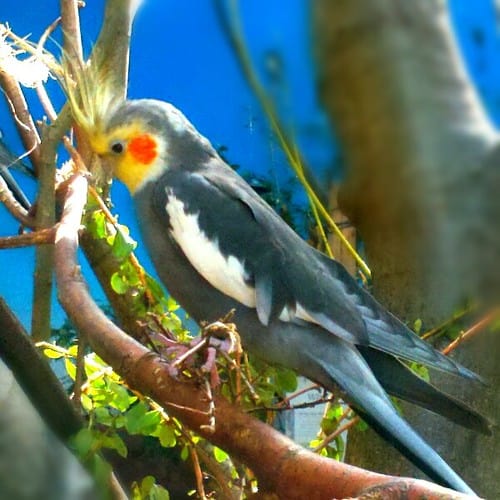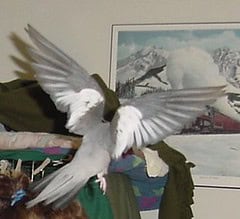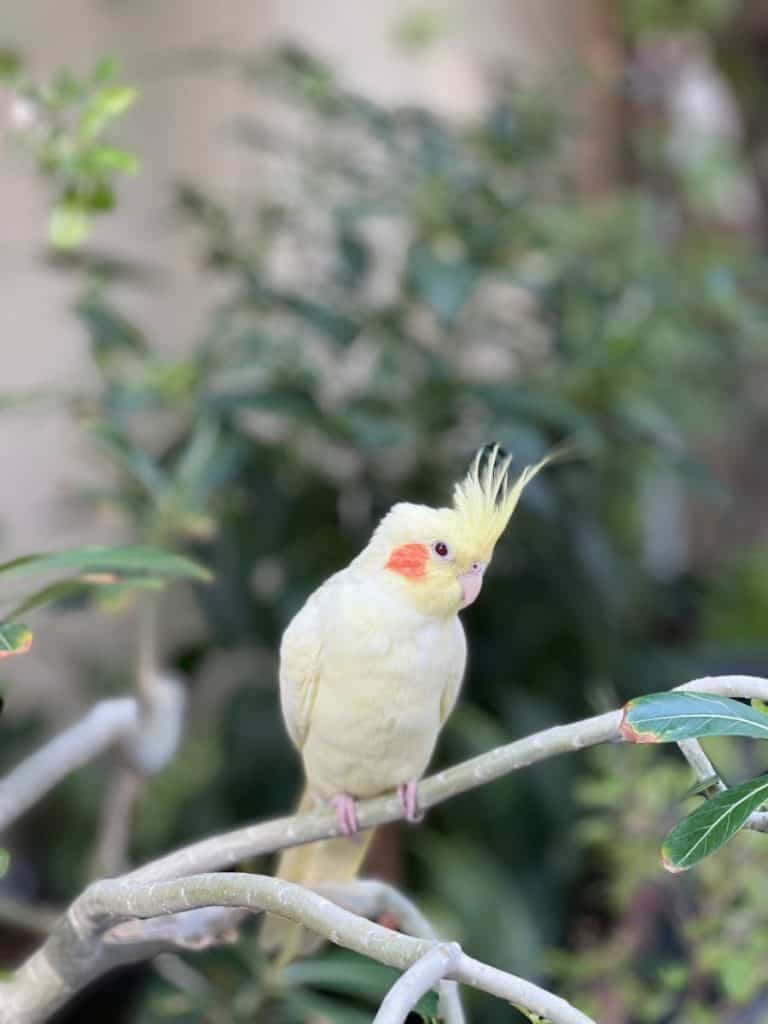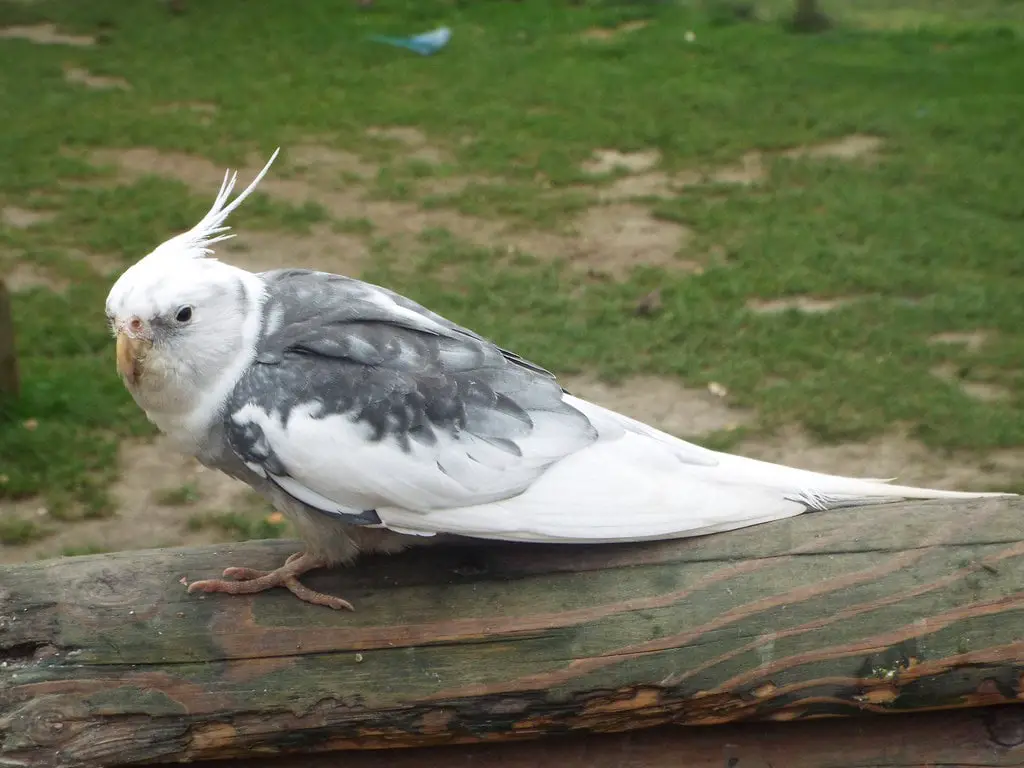Imagine having a vibrant cockatiel, with its feathers creating a dazzling array of colors that brighten your day. Cockatiel feathers are not just a beautiful display but also crucial indicators of your bird’s health and mood. Whether you’re an experienced bird owner or considering adopting one, understanding your cockatiel’s feathers is essential for their well-being.
From the soft gray of the common cockatiel to the striking hues of the lutino, each feather’s color and pattern offer insights into their care and environment. Learn how to interpret these signals and ensure your feathered friend thrives. Explore the world of cockatiel feathers to keep your pet looking and feeling its best.
Understanding Cockatiels Feathers

Cockatiel feathers not only serve as a protective layer but also provide insights into your bird’s health and emotional state. It’s essential to understand the structure and purpose of these feathers to maintain and monitor the well-being of your cockatiel.
The Anatomy of Cockatiel Feathers
Cockatiel feathers are composed of three main parts: the shaft, barbs, and barbules. The shaft, or rachis, runs centrally throughout the length of the feather, providing support. Attached to the shaft are the barbs, which further branch into barbules. These barbules interlock, creating a smooth, flat surface that helps with flight and insulation.
In addition to these structural elements, cockatiels also have down feathers, which are soft and lie beneath the exterior feathers, primarily for insulation. Understanding these components helps you assess feather quality and identify issues such as breakage or nutrient deficiencies, which may require a consultation with an avian vet.
The Purpose of Different Feather Types
Cockatiels display a variety of feather types, each serving distinct functions. Flight feathers, located on the wings, are long and robust, designed for flying. Tail feathers offer balance and steering during flight. Both these feathers are critical and should be checked regularly for any signs of damage or stress. Body feathers provide insulation and help regulate temperature, while the crest feathers on the head can indicate emotions—erect when excited or flat when scared. By observing these feathers, you can gauge your bird’s well-being and mood, ensuring they are comfortable and healthy in their environment.
Signs of Healthy vs. Unhealthy Feathers

Recognizing the difference between healthy and unhealthy feathers in cockatiels is crucial for monitoring their overall well-being. This section details the characteristics of healthy feathers and identifies common feather issues, guiding you in ensuring your cockatiel remains in top health.
What Healthy Cockatiel Feathers Should Look Like
Healthy cockatiel feathers are vibrant and smooth, indicating good health and proper care. The feathers should appear full and uniformly distributed across the body without any patches or bald spots. Ideal feathers manifest a natural sheen that reflects proper nutrition and hydration. If the flight feathers and tail feathers are intact and well-formed, this allows for optimal balance and flying capabilities. Regular preening by the cockatiel also helps keep feathers in good condition, suggesting normal behavior and comfort.
Common Feather Issues in Cockatiels
Unhealthy feathers can point to numerous health issues or deficiencies in your bird. One prevalent problem you might notice is feather plucking, where a cockatiel might pull out its feathers due to stress, poor diet, or environmental factors. Another issue is the presence of broken or tattered feathers, which often results from accidents within the cage or a lack of space to fly.
Additionally, a dull, listless feather appearance can indicate nutritional deficiencies. If you observe any of these signs, consult an avian vet to diagnose and address these health concerns effectively. Feathers that look discolored or have an abnormal texture also necessitate professional evaluation, as these could indicate fungal or bacterial infections.
Maintenance and Care for Cockatiels Feathers

Maintaining your cockatiel’s feathers requires attention to diet and grooming practices. Proper care ensures vibrant and healthy feathers, reflecting the overall well-being of your bird.
Proper Diet for Healthy Feather Growth
To promote healthy feather growth in cockatiels, incorporate a variety of nutrients into their diet. Your cockatiel’s diet should mainly consist of high-quality pellets, which are specially formulated to provide all the essential vitamins and minerals needed. Adding fresh vegetables, such as carrots, spinach, and broccoli, at least three times a week can enhance the vitamin intake, crucial for feather health.
It’s also beneficial to include foods rich in omega-3 fatty acids, like flax seeds or chia seeds, which help maintain the natural oiliness of the feathers, keeping them sleek and shiny. Always ensure fresh water is available, as hydration plays a critical role in feather condition.
Grooming and Hygiene Best Practices
Regular grooming is crucial for maintaining the health of your cockatiel’s feathers. Weekly baths or gentle misting with lukewarm water helps remove dust, dander, and other particles, keeping the feathers clean and vibrant. Avoid using any soaps or chemicals that can strip natural oils from the feathers. After bathing, allow your cockatiel to air dry in a warm, safe environment. Additionally, check your bird’s feathers for any signs of damage or parasites, which might indicate health issues.
If you notice abnormal feather loss or breakage, consult an avian vet to address any underlying health problems. Regular cage cleaning also prevents bacterial and fungal infections, contributing further to your cockatiels overall feather health. Keep the living environment clean, change water daily, and remove any food residues promptly to maintain optimal hygiene.
- NOTE : After a customer contact us about the potential safe problem of the metal clip and small bell, we've changed clip to cotton rope on the top and raplace bell with bigger size. Safer, Easier to hang in multiple places, good decoration for parrot's cage.
- MATERIAL : Parrot chewing toys made of porous mineral stone, rich of calcium for pet's health while grinding bird's beak.
- ADVANTAGES : Colorful beads between lava stones and the bell on the bottom attract parrot's attention, reduce loneliness, good for parrot's psychological wellness.
- DESIGN : Star shaped design of the stone make it easy for parrots to trim and clean their beak.
- WIDE FOR : Not only as bird supplies(African Greys Amazon Conure Cockatoo Eclectus Budgies Parakeet Cockatiel), but also for rodents to grind teeth(Hamster Chinchilla Rabbit Mouse Squirrel Gerbil). Best for small animals under one year of age.
Behavioral Insights Through Cockatiel Feathers
Understanding the subtle cues exhibited through cockatiel feathers can offer deep insights into their behavioral state. This section explores how different feather displays can reflect your cockatiel’s emotions.
Reading Your Cockatiel’s Mood from Its Crest
Cockatiels express a variety of emotions through the position of their crest feathers. Observing these variations helps you gauge how your bird feels in different situations. If your cockatiel’s crest is held high and erect, it’s likely a sign of curiosity or alertness. This posture often occurs when your bird encounters something new or exciting in its environment.
Conversely, if the crest lays flat against the head, this could indicate fear, submission, or illness. Such a stance requires careful observation to determine if your cockatiel might need a more comforting environment or a consultation with an avian vet. A slightly relaxed crest, not fully flat nor fully erect, usually signifies contentment and calmness, showing that your bird feels safe and is in a neutral state.
Regularly monitoring these feather positions, along with noting any changes in behavior or appearance, can guide you in providing the best care for your cockatiel. If you notice persistent unusual crest positions, consider adjusting your bird’s environment or diet, and continue to watch for other signs that might warrant a more detailed examination.
The Lifecycle of Cockatiel’s Feathers
To truly appreciate the intricacies of your cockatiel’s feathers, it’s essential to understand their lifecycle. Like all birds, cockatiels go through a natural process of feather growth, shedding, and regrowth, known as molting. This cycle is vital for maintaining the health and functionality of their plumage.
Molting in Cockatiels
Molting is a natural process that typically occurs once or twice a year in cockatiels. During this period, old feathers are shed, and new ones grow in their place. This process can last several weeks and requires additional care and attention from the owner.
Signs of Molting
You may notice your cockatiel preening more frequently or seeming more irritable than usual. These behaviors are normal as new feathers, or pin feathers, emerge, which can be itchy and uncomfortable. Pin feathers are covered in a keratin sheath that your bird will gradually remove through preening, revealing the new, mature feathers beneath.
Supporting Your Cockatiel During Molting
To support your cockatiel through the molting process, ensure they have a diet rich in proteins and vitamins, which are crucial for feather growth. Foods like boiled eggs, legumes, and leafy greens can provide the necessary nutrients. Additionally, offering regular baths or misting can help soothe the skin and ease the discomfort of new feather growth.
Common Feather Disorders in Cockatiels
Despite your best efforts, cockatiels can sometimes develop feather disorders. Recognizing these issues early and seeking appropriate treatment can prevent more severe health problems.
Feather Plucking
Feather plucking, or self-mutilation, is a common issue where cockatiels excessively pull out their feathers. This behavior can result from stress, boredom, poor diet, or underlying medical conditions. If you notice your bird plucking its feathers, consult an avian vet to determine the cause and appropriate intervention.
Feather Cysts
Feather cysts occur when a feather fails to emerge correctly and grows under the skin, forming a lump. These cysts can be painful and may require surgical removal by an avian vet.
French Molt
French molt is a condition that affects young cockatiels, leading to abnormal feather growth and loss. It’s believed to be caused by a viral infection, and while there is no cure, supportive care can help manage the symptoms. Affected birds may need a modified environment to prevent injury due to impaired flight.
Wrapping Up: Cockatiel’s Feathers
Understanding your cockatiel’s feathers offers a window into their overall well-being and emotional state. By keeping an eye on the health of their feathers and recognizing the signs they exhibit you’re not just ensuring they look good—you’re actively participating in their health and happiness. Remember that proper diet grooming and a clean environment are fundamental to maintaining those vibrant feathers. Stay attentive to what your cockatiel’s feathers are telling you and you’ll be well-equipped to provide the care they deserve.
Other suggested articles:
What types of cockatiel mutations are there?
- What Types Of Cockatiel Mutations Are There
- What Tricks Can You Teach Your Cockatiel
- What Toys Do Cockatiels Like
- What To Put In The Cage Tray Of Your Cockatiel
- What To Do When Your Cockatiels Molting
- What To Do When Your Cockatiel Escapes
- What To Do When You First Bring Your Cockatiel Home
- What To Do If Your Cockatiel Bites You
- What To Do If You Need To Take Your Cockatiel On A Vacation
- What Smells Are Toxic To Birds
- What Plants Are Toxic To Cockatiels
- What Other Accessories Do You Need To Buy For Your Cockatiel
- What Is Your Cockatiels Senses
- What Is The Pelleted Diet
- What Is The Lifespan Of A Pet Cockatiel
- What Is The Cockatiels Background
- What Is The Avian Anatomy Of Your Cockatiel
- What Is My Cockatiel Trying To Tell Me
- What Is A Pied Cockatiel
- What Is A Cockatiel
- What Foods Your Cockatiel Should Avoid
- What Foods Are Toxic To Cockatiels
- What Does It Mean When A Cockatiel Puffs Up
- What Does A Pregnant Cockatiel Look Like
- What Do You Need To Know About Your Cockatiels Feathers
- What Do You Need To Know About Your Cockatiels Droppings
- What Do Cockatiels Eat In The Wild
- What Do Cockatiels Eat Diet Nutrition
- What Are Your Cockatiels Seasonal Needs
- What Are Your Cockatiels Possible Health Problems
- What Are Your Cockatiels Household Hazards
- What Are The Nutrition Requirements Of Your Cockatiels Food
- What Are The First Aids In Case Of Emergency To Your Cockatiel
- What Are The Cockatiel Basics
- What Are Some Tips On Training Your Cockatiel
- What Are Common Cockatiel Behaviors
- What Are Cockatiels Signs Of Illness
- What Age Do Cockatiels Stop Breeding




